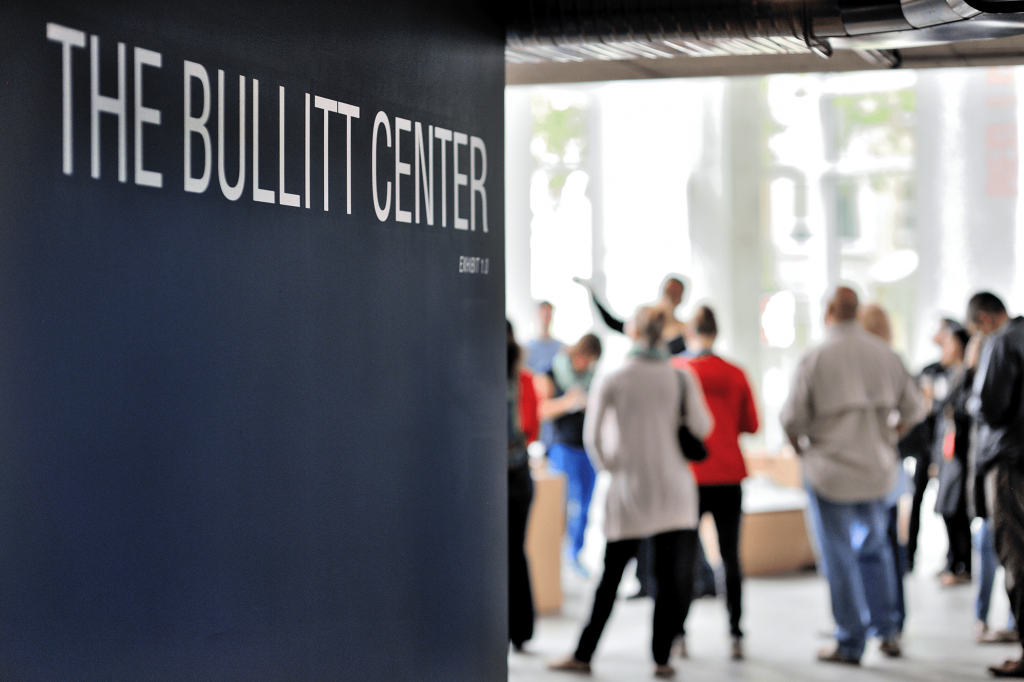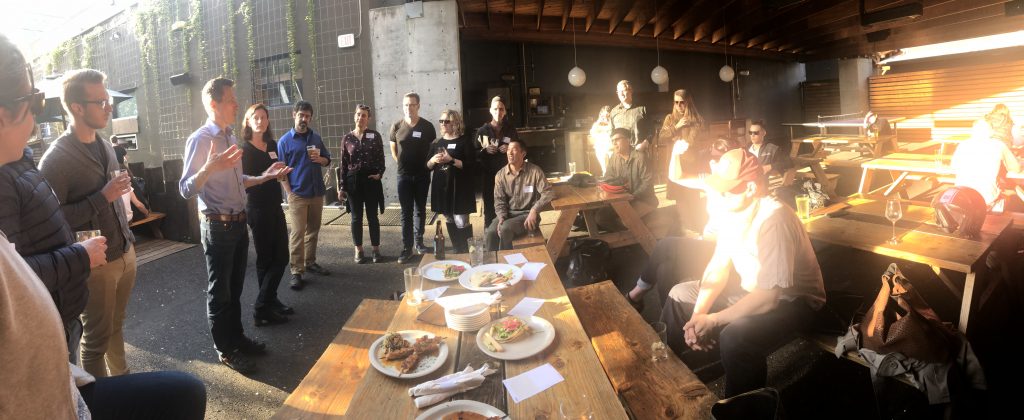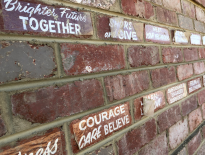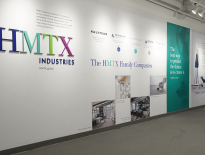Creating Policy Conditions for A New Decade of Regenerative Buildings
In response to the urgent crisis presented by climate change, small and large governments around the world are using the beginning of a new decade to look at fresh ways to address environmental issues through policymaking. Recognizing buildings as huge contributors to carbon emissions (averaging 40% of the global total), these jurisdictions are setting aggressive targets and exploring ways to dramatically cut back on the negative impact of the buildings developed within their boundaries.
During the same transitional time, we at the International Living Future Institute (ILFI) are excited to offer programs like the Living Building Challenge, Core Green Building Certification, and Zero Carbon Certification, which provide a compelling vision for meeting these climate goals. Yet, we often find ourselves watching our project teams struggle to demonstrate the return on investment of these buildings due to the current market system, one that values the externalization of negative environmental impacts and neglects the positive (but difficult to calculate) benefits of climate justice, health, and equity.
As Manager of the Policy team at ILFI, it is my job to play matchmaker for these two opportunities – local jurisdictions can provide the value and bridge the funding gap for developers with incentives for buildings that pursue our programs. Successful incentives we’ve seen around the country include additional density (where green buildings are given density bonuses ranging from 10 – 25 percent), expedited permitting (where permits for green buildings move to the top of the pile), and zoning flexibility (which exempts green buildings from zone-specific parking or density requirements). In exchange for this low or no-cost option, jurisdictions are able to achieve their carbon goals—plus water, equity and health goals—for the built environment with verified performance from ILFI. And finally, developers are left with a proforma that works for them. It’s the kind of symbiotic and collaborative partnership we need more of in 2020 if we’re going to make the necessary strides toward a Living Future.
As an example, we need look no further than ILFI’s home base, where our partnership with the City of Seattle resulted in the successful implementation of the Seattle Living Building Pilot Program (LBPP). First passed in 2009 and updated several times since then, the LBPP provides height and density incentives for buildings in exchange for meeting Petal or Living Certification under the Living Building Challenge. The City provided this path in the Land Use Code in order to stimulate innovation, encourage models of high performance, and, crucially, to meet their goal of becoming a carbon-neutral city by 2050. Two buildings have successfully completed the pilot (including the Bullitt Center, ILFI’s headquarters!) and six buildings are in various stages of permitting and construction, including a senior care facility, a large commercial office building, and what would be the first Energy Petal Certified multifamily residential project.

ILFI was intimately involved during this ten-year policymaking process, and we learned a lot about what it takes to make a successful incentive program. We learned that finding the appropriate type and level of incentive is difficult to establish without a deep understanding of local development conditions, and that achieving the right incentives is crucial for the efficacy of the program. We learned that it takes time—lots of it—to build the relationships necessary to pass and implement a program like this. And we learned that we simply can’t do all of this on our own if we want to achieve the considerable advances demanded by the crisis we face. Up until recently, the legislative incentives for Living Buildings had come as a result of isolated efforts on the part of forward-thinking municipalities, motivated volunteers and catalyst projects. The Institute long supported these endeavors, while recognizing that it requires substantial time and resources to educate, assist and support the efforts. To accelerate the change we seek, we knew we had to leverage the power of the Living Future Network and provide them with the tools they needed to be effective.
So last year, with the help of some generous land use lawyers and municipal advisors who volunteered their time, we created a Model Incentive Ordinance Template. This seventeen-page document borrows language from successful deep green building incentive programs from around the country and compiles them into a handy plug-and-play format. It’s like Mad Libs, but instead of coming up with a silly story at the end, you have your own incentive program!
After the soft launch of this resource, the template found its way into the hands of volunteers around the world—from San Diego to D.C., Dallas to Detroit, Barcelona to Trinidad and Tobago, and dozens of cities in between. We knew from experience that sample language, though a huge advantage, would not be all that was necessary to get these incentive programs across the finish line. So we packaged the template in a resource we call the Toolkit for Policy Leadership. The Toolkit includes a guide for implementing local policy change, a list of sample incentives and when they might be applicable, and a selection of case studies from around the country.
Megan Recher, Sustainable Building Advisor at Perkins + Will in Dallas, Texas, is working to pass legislation requiring new construction projects within the City of Dallas to achieve Petal Certification as a minimum level of sustainability. So far they’ve secured one City project that is pursuing Petal Certification and two more that are considering the pathway as a pilot for this effort.
“The ILFI Policy Resources have been an incredible tool to understand and walk through with the City and Policy Makers. It has shown them clear examples of what has been done in the past and allows for them not to have to reinvent the wheel but rather adjust what is needed based on the region. These resources have also provided me with the correct language and ideas behind incentives for our conversations. These resources have been single handedly the best resource I have found to have deeper conversations about policy change.”
Megan Recher, Perkins + Will

From Gensler’s office in Portland, Oregon, Amanda Ingmire worked on one of the earliest buildings to pursue Petal Certification under the LBPP. Drawing from this experience, she is now working with a team of volunteers from the Portland Collaborative to pass something similar in the city, with the goal of increasing the number of Living Buildings and helping the region meet their Climate Action and Equity goals.
During their robust stakeholder engagement process, the team learned that the incentives used in Seattle (density and height bonuses) would not work well in Portland. Instead, they identified expedited permitting, a “Green Project Manager” to guide LBC teams through the design review and permitting process, code variances as required by the LBC, and variances from the typical System Development Charges based on energy, water and waste reduction as incentives that would be welcomed by the development community.
“The Policy Toolkit has been very helpful in showing local teams and City staff that this has been done elsewhere.”
Amanda Ingmire, Gensler
Mark Deakos is a marine biologist turned sustainability consultant for 3-P Consulting in Maui, HI, and one of the newest additions to the LBC Ambassador network. He’s currently in the process of meeting with various stakeholders in order to implement an incentive ordinance and help facilitate sustainable project decision-making for developers on the island. The draft framework has been well received by the West Maui Community Plan Action Committee, several County Council members, and the Maui Director of Housing and Human Concerns.
“The slide materials made available for the ambassadors have been a great asset and the policy template as well, since it demonstrates that the majority of the work has already been done and implemented in municipalities elsewhere.”
Mark Deakos, 3-P Consulting
The Toolkit also includes guidance for the creation of municipal commitments for those jurisdictions that want to lead with their own capital projects. For example, Santa Monica passed a 2017 ordinance requiring all City-owned new construction building projects that exceed 10,000 square feet to meet ILFI’s Zero Energy Certification. We need many more jurisdictions similarly willing to put their own real estate on the line in order to demonstrate their commitment and model what’s possible in their community.
Though we have now empowered members of our network to execute their own local incentives, the advent of 2020 doesn’t mean I’ve decided I can kick back and watch the success stories pour in. I still work actively with volunteers around the country to tweak their incentives, garner letters of support from other project teams and members of their community, address questions about implementation, and draft public statements for them to use while testifying.
I also offer support on behalf of the Institute for legislation championed by our partners around the world, as long as the effort is aligned with our Policy Priorities. This list of Policy Priorities reflects our vision for a Living Future—one in which project teams are not penalized for removing Red List toxins from their materials or implementing on-site water reuse systems, but are rewarded for it. One in which a combustion-free building is not an anomaly, but a requirement for new development.
To that end, we have publicly supported and advocated for policies to remove flame retardant requirements from code language in California, brought rulemaking legislation for new performance-based water reuse pathways to the Oregon and Washington state Congresses, and partnered with Seattle Councilmember Mike O’Brien to require all new buildings in Seattle to be all-electric.
So, what now? Beyond supporting our volunteers with their local incentives, working through implementation details with our motivated municipal partners that have made capital commitments, and advocating for policies that are aligned with our priorities, I try to keep my eye out for ways to leverage our programs against existing legislation. For example, New York City (my current home) just passed some of the most aggressive climate legislation targeting buildings in the world. Local Law 97, also known as the Climate Mobilization Act, places strict emission limits on all buildings (commercial and residential, new and existing) over 25,000 square feet. If building owners exceed these emission limits, which decrease over time, they face steep fines. I worked with Haley Gardner, our Zero Energy Specialist, to develop a calculator that potential project teams can use to see if their project meets our Core Energy requirement after meeting the emissions cap per LL97. This calculator can be used as a tool to encourage the development of more Core Green Buildings in New York City!
As we enter this new decade, I am convinced of a few things. First, I know that the climate crisis we are facing is larger and more imminent than many of us ever thought possible. Second, I know that ILFI’s programs are necessary to address the energy, water, health and equity implications of the built environment in this crisis. Third, I know that we cannot do it alone. We at ILFI are unable to create the mechanics which will magically make Living Buildings cheaper than conventional buildings. As long as our economy privileges the externalization of environmental impacts over the health and wellbeing of its watersheds and its community members, this will remain the case. However, there are forces in our society that are designed to manipulate these variables in order to create a more livable world, and I believe that local government (at its best!) is one of those forces. The creation of incentives and requirements for deep green buildings like those certified by ILFI are essential to creating a Living Future. I hope you’ll join me in my efforts to develop, inform, and advocate for policies such as these in 2020 and beyond.
Want to implement your own local incentive program? Check out the Toolkit for Policy Leadership.
Ready to create your own incentive legislation? Request the Model Incentive Ordinance Template.
Have a local policy that needs ILFI’s support? Make sure it aligns with our Policy Priorities, then email advocacy@living-future.org
Want to use our LL97 comparison calculator? Email advocacy@living-future.org



